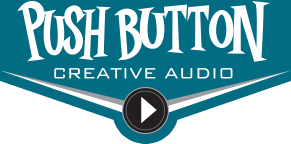
In November of 1925, WSM Nashville broadcast the first episode of what would become the Grand Ole Opry show. Families gathered around their radios to listen to their favorite artists play. It was a phenomenon that took country music nationwide with its massive following. Sound like some nostalgic fantasy of the good old days? Here’s some good news: it’s still happening. As old as it is (really, old – the Opry is predates sliced bread), the Opry still runs as a live show and a radio program broadcast on the same WSM Nashville station, as well as globally online through satellite radio. Millions still listen to the same radio program worldwide. To those that say that radio isn’t relevant anymore, the success of the Opry is an anomaly – but they couldn’t be farther from the truth.
- Radio is thriving
Could a dying medium still gather a multi-million member audience to watch the same show for nearly a century? The numbers don’t lie – radio is huge. Actually, that’s an understatement: old-school, terrestrial radio has the largest audience of any medium in America today. Let that sink in. Smartphones and television reach fewer people than radio stations.
There’s a myth out there that people, no matter what kind of program they’re consuming, would simply just rather just watch it on TV over listening to it on the radio. Again, the truth is in the numbers. While millions listen to the Grand Ole Opry via radio, CMT’s Nashville – a show about performing on the Opry – premiered its final season to an audience of just 1.6 million.
2. Young people do listen to radio (and more than you’d think)
Ah, yes. Those darned kids and their newfangled smartphones. It’s all they use anymore…or is it? In 2014, the journal for the Association for Regional Campuses of Ohio set out to find just how many of our teens are still listening to the radio. They found that in their sample of 13-19 year olds, 73% of them reported listening to AM or FM radio. Almost all of them, when asked what their favorite radio shows were to listen to, named their favorite station(s) by frequency (99.7, 101.2, etc) instead of show name. We can assume that, as surprising as you may find it, the majority of teens are still turning the “dial” to their favorite radio station to tune in.
3. Radio is evolving
The people that will tell you that radio is a dying, static medium are the ones that believe that radio exists only when they go to work in the morning and just dissipates when they park their car. Like anything else, radio is evolving to a changing technological landscape. When traditional television feared its end was in sight with the rise of streaming , we didn’t declare it dead upon streaming’s arrival; instead, we embraced new forms of TV and all collectively became obsessed with Netflix’s Stranger Things.
The invention of Pandora and Spotify put radio in the literal hands of listeners, and with great success. In their free tiers alone, Pandora and Spotify service 78 and 60 million people each month, respectively. Another 40 million users subscribe to Spotify’s paid service, totalling to a whopping 100 million people in 58 countries each month. For comparison, the 2016 Super Bowl averaged 111.9 million viewers. I’d be willing to bet that airtime on Spotify is the bargain of the century compared to a literal Super Bowl ad.
4. Radio is still getting results
By now, it’s clear to see that people are definitely still listening to the radio. But, is it still relevant for the advertiser?
In a word: Yes. In a few: Yes, and it’s a ridiculously good investment.
When Taco Bell went to Pandora to advertise their brand to millennials, they saw just how impactful radio can be. The advertisements made millennial Pandora listeners 15% more likely to visit a Taco Bell and caused a 16% lift in product association.
Results from traditional terrestrial radio are just as inarguably good. According to a recent study, brands that pursued radio advertising options saw an average $6 increase in sales for each dollar spent on advertising. To make the deal even sweeter, radio is typically cheaper than television, magazine, newspaper, and outdoor advertising space. That’s a lot of money to be made on such a comparatively cheap advertising medium.
So, is radio still relevant? You could choose to ignore the numbers and stick to the myth that radio is a “dying field”. You could ignore the 73% of youths that still listen to traditional, terrestrial radio. You could push aside the 78 million Pandora users that listen to advertisements. You could take that 6x return on investment out of consideration. You could, but those numbers add up to a dream medium for reaching your audience.







